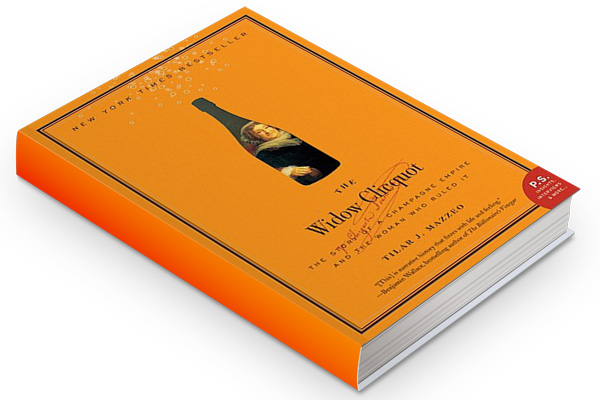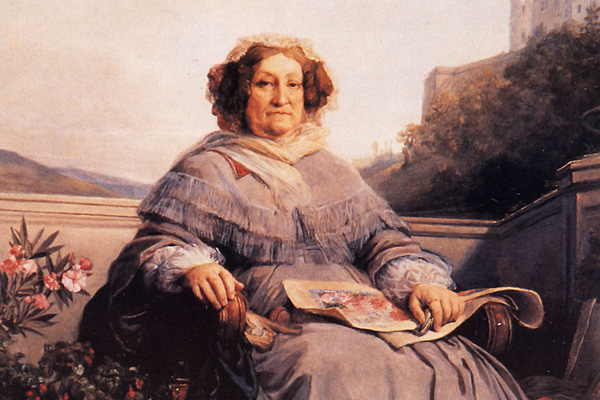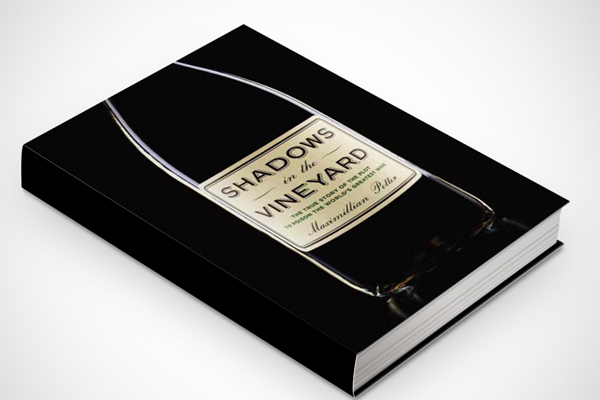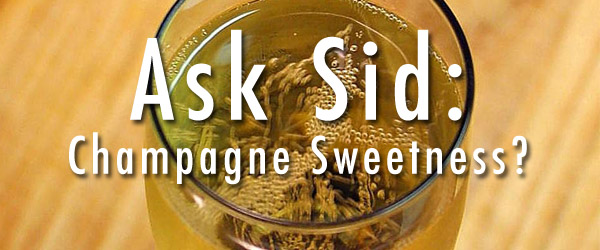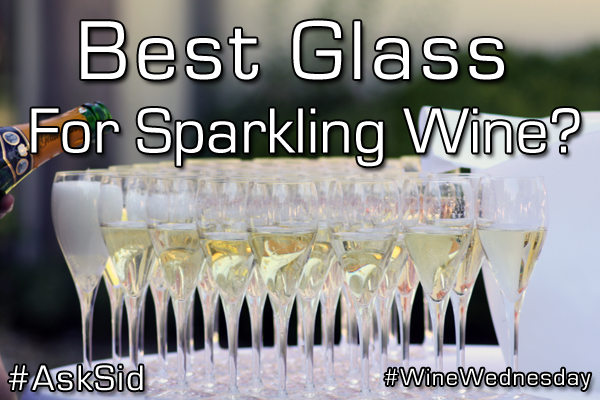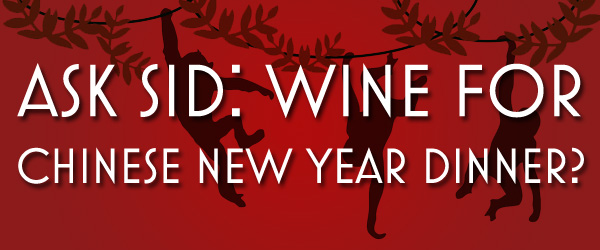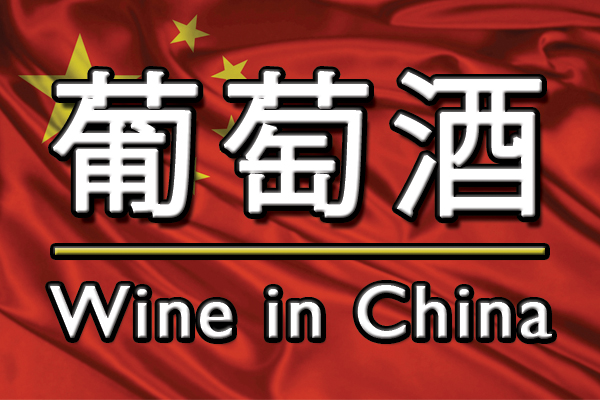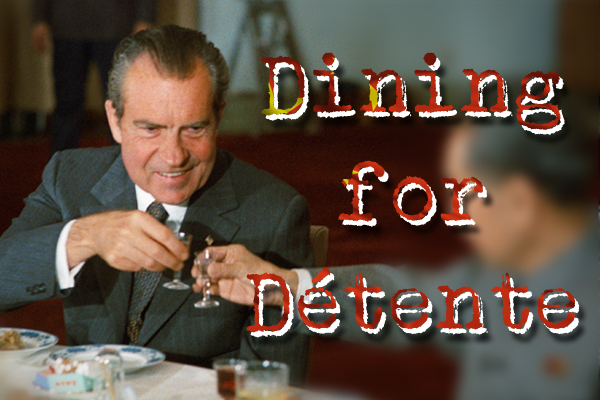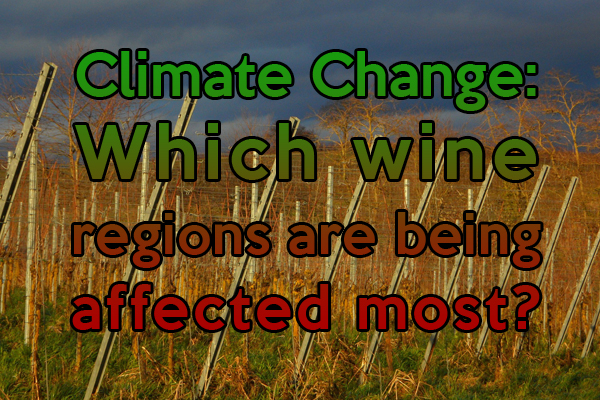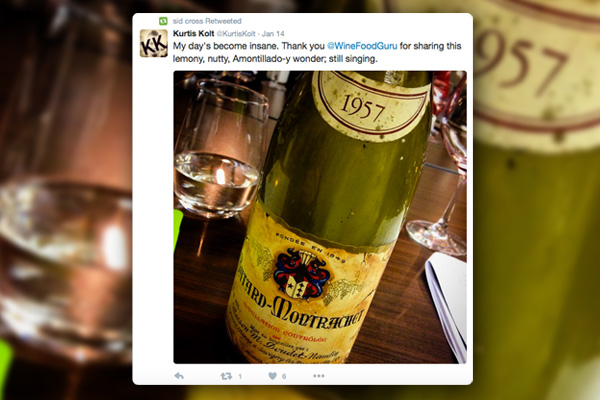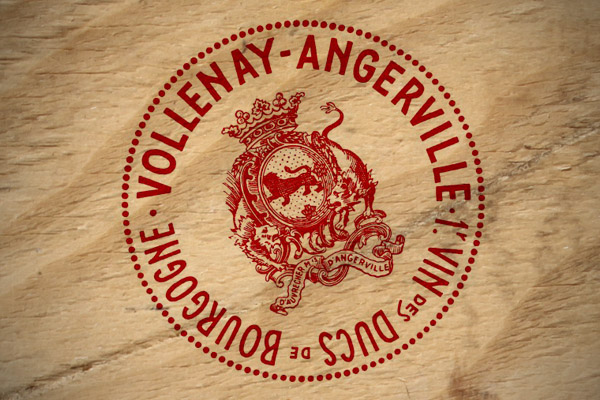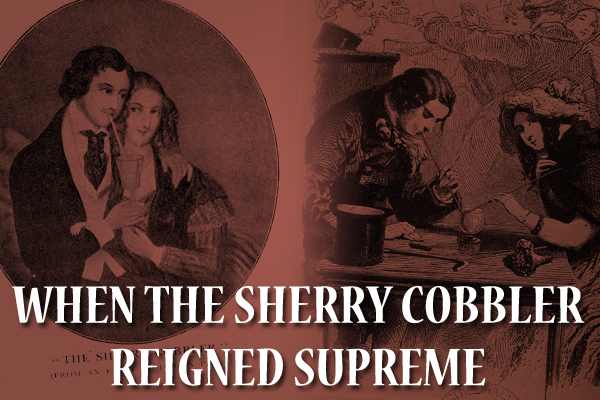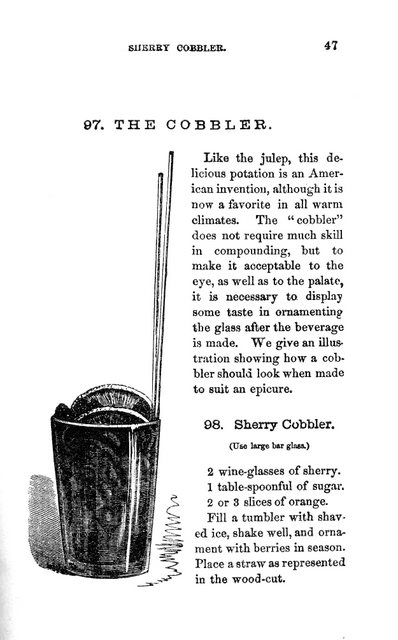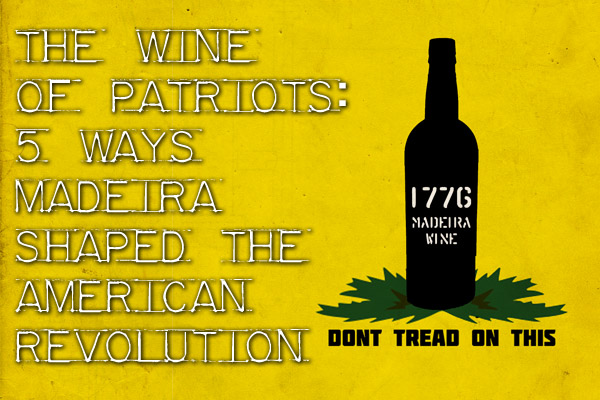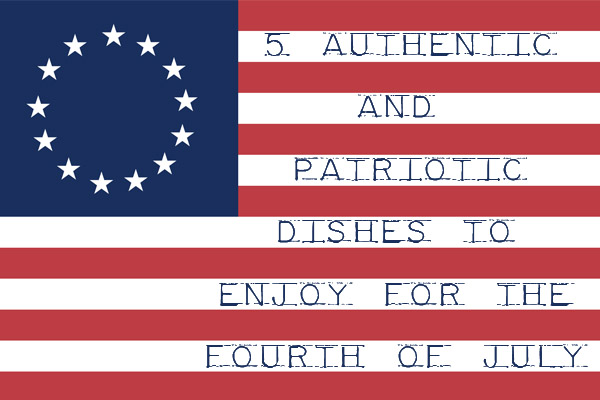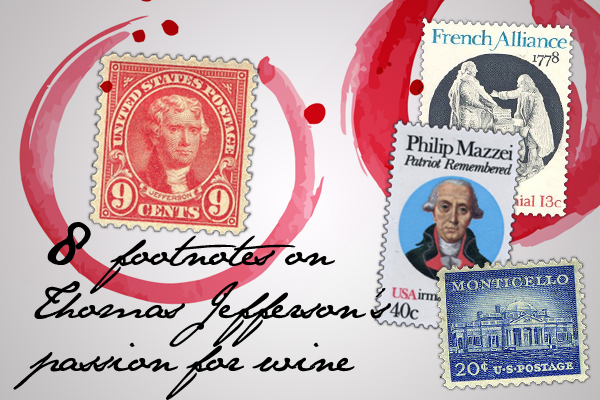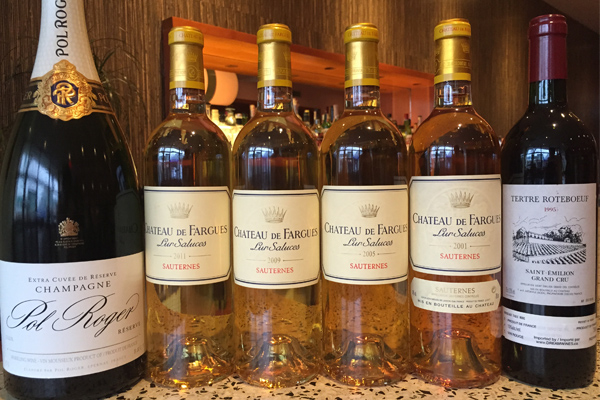
On January 31, 2016 Prince Eudes D’Orleans Directeur General of Château de Fargues (Lur Saluces) presided over a dinner in Vancouver matching well top vintages of his Sauternes with some brilliant Asian inspired dishes by the team of Chef Angus An (Maenam & Fat Mao Noodles in Vancouver) and visiting Chef Antonio Park (Park Restaurant & Lavanderia in Montreal). This memorable evening started with magnums of Pol Roger Extra Cuvee de Reserve Champagne for BC Dungeness Crab Cromesquis with charred pickle & Uni Ikura Cracker, ginger, lime, spot prawn cracker.
2009 Château de Fargues so ultra rich with lots of “noble rot” botrytis drinking forwardly with Park’s Charcoal Grilled BC Albacore Tuna, Montreal Steak Spice, Aji Verde, and Chimichurri.
2005 Château de Fargues an exceptional vintage with better balance from 5 picking passes from September 27 to October 27 explosive yet smooth and refreshing with An’s spicy Southern Thai Turmeric Curry, Uni emulsion, Smoked Sablefish, Crab, Lobster, and Mussel. A big hit!
2001 Château de Fargues has a wonderful classic style of very best balance with deepening colour showing that typical “white flowers, tarte tatin, honey and citrus zest” pairing well with Park’s Chawanmushi & Sashimi, Japanese egg custard, herring roe, salted ikura, uni, mirugai, tosazu Hamachi & hotate sashimi. Unique.
1995 Château Tertre Roteboeuf (“Hill of Belching Beef”) for a change of pace top Bordeaux red showing rich, powerful, and complex appropriate for the 2 chefs combining work on diverse “Lettuce Wraps” with herbs & other greens for Waygu Beef & Duck Breast (and some foie gras which also was divine with a little 2001 I had left) and Relishes of both Crab & vibrant Smoked Mackerel
2011 Château de Fargues still fresh young and superb with only 3 passes in the vineyard (and as usual picking about a week before Château d’Yquem) for An’s outstanding finale of Cheesecake Semi-Fredo, Tamarind Tuile, Guava Sorbet, Passion Fruit Puree, Lime Crumble.
The menu was really an inspirational tour de force by both these talented chefs and executed so very well to match these classy wines. All wines were served to perfection by the knowledgeable crew including wine writer/sommelier Kurtis Kolt and Maenam restaurant manager/sommelier Kristi Linneboe. Also Eudes received lots of valuable original menu ideas to take back to his newly hired female Executive Chef (with Paul Bocuse experience) for upcoming events at Château de Fargues. Really an eye opener on the quality of Château de Fargues (since 1472) and the versatility for food pairings with Sauternes!
What is your best recommendation for a food item to match Sauternes?
You might also like:
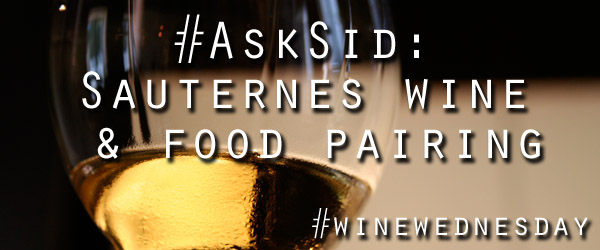 |
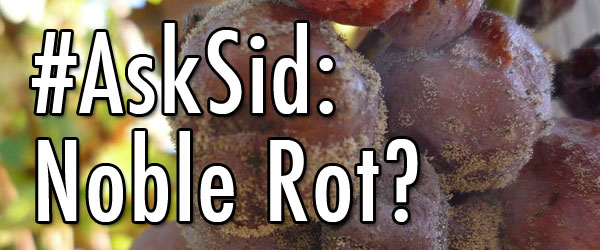 |
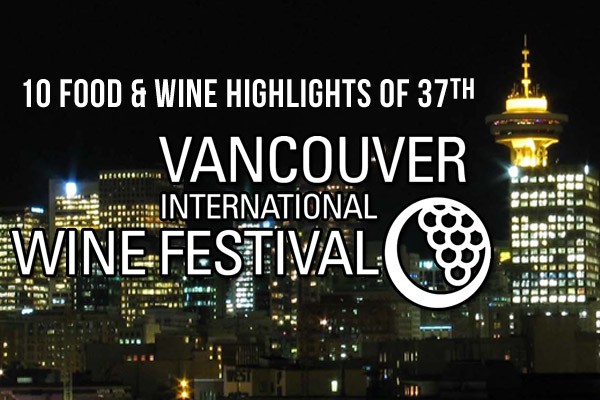 |
